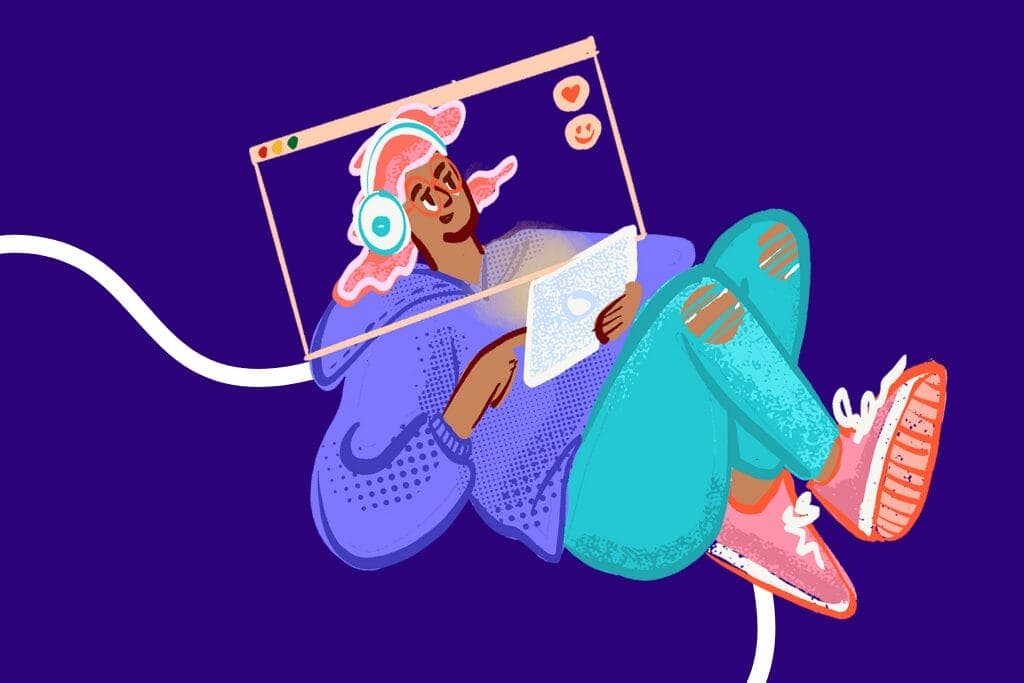Creating a Culture of Queer Acceptance
Post authored by Mercy R.
This blog was created in partnership with In Tandem, an organization facilitating transformational change through the elevation of youth voices.

Growing up as the child of Indian immigrants,
I was constantly reminded of cultural traditions and expectations. There was this unspoken pressure to be a “perfect” daughter, someone who would grow up to marry a man, uphold family values, and follow the path set by my parents. My Queerness didn’t fit into this. It was really hard to embrace my culture, which discourages being Queer, or picking who I truly was, something I could not change about myself.
It was like living in two worlds, one where I was expected to live according to societal norms, and another where my true self was waiting to live judgment-free. This lack of affirmation only made me struggle more with my mental health. Without guidance or safety provided by people around me, I searched for validation from people online.
Experiencing help, online
Meeting people online helped me understand what I was feeling and gave me a perspective of other people’s stories while helping me form bonds and foster empathy with the people I was talking to. When talking to people online I got a chance to be anonymous so I could truly be myself without the fear of judgment and bullying and also away from the rejection of parents. Being part of these online groups has been very helpful to me, especially with my mental health. Just being able to talk to someone freely about anything can help reduce overwhelming emotions and help create a calmer mind space.

The good and bad of in-person spaces
In-person space can also provide opportunities for Queer youth to express themselves openly. A study from Hopelab and Born This Way Foundation revealed that 44% of those surveyed felt very safe online compared to 9% in person. Physical settings, like at school or at home can create unsafe environments, especially for Queer young people who might be more susceptible to emotional and physical bullying. I experienced bullying in these places, especially at school – places that are meant to be safe for young people, are often not. On the other hand, they can also offer safe environments to help create a personal bond with other human beings.
To ensure that LGBTQ+ youth feel supported both online and offline, it’s essential that the adults in our lives take steps to create safer spaces for us. By doing this we can help build a stronger relationship with Queer youth and make them feel more accepted and loved. According to The Trevor Project, in 2023, 41% of youth seriously considered attempting suicide that year. This highlights the critical need for more supportive spaces and mental health resources for teens.
How adults can offer support
As a whole, Queer youth should have access to safe spaces online whether it is online or in person. LGBTQ+ teens should be able to feel safe wherever they go, especially if the adult present makes it a safe space. When adults empower teens to express themselves freely it helps reduce the risk of bullying but also helps them have better mental health. By working together to create a culture of acceptance, we can ensure that Queer youth feel valued and supported. The primary objective is for every LGBTQ+ young teen to be able to feel confident in their own skin and let them know that they are supported by the people around them. Also, to validate their own identity and prioritize their well-being. If we push for education and awareness about the importance of inclusion and kindness both online and in-person we can create spaces for young people to connect safely with others. Some resources from Born This Way Foundation that help do this are #BeKind365 and their Channel Kindness space, which encourages young people to share their stories.
Hopelab Research
Explore youth-engaged research reports from Hopelab.

